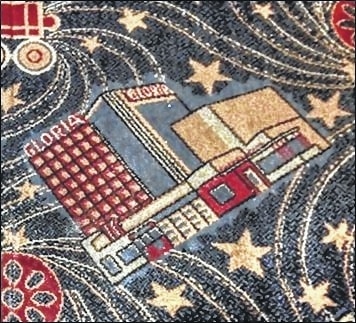
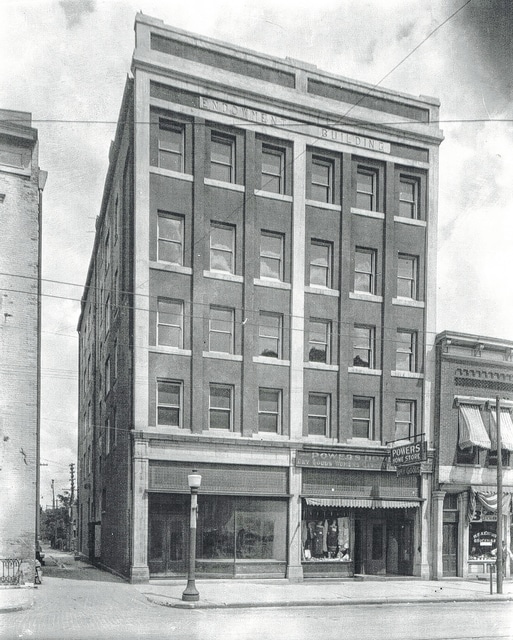
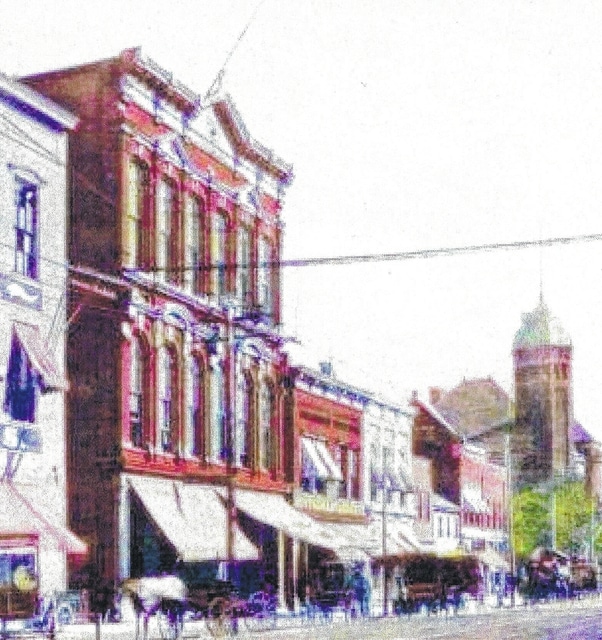
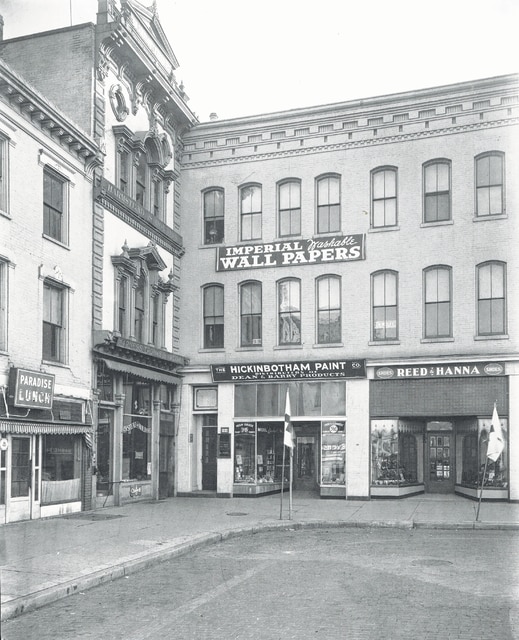
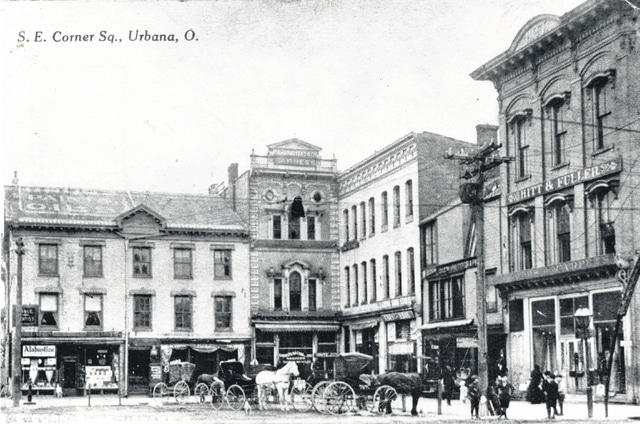
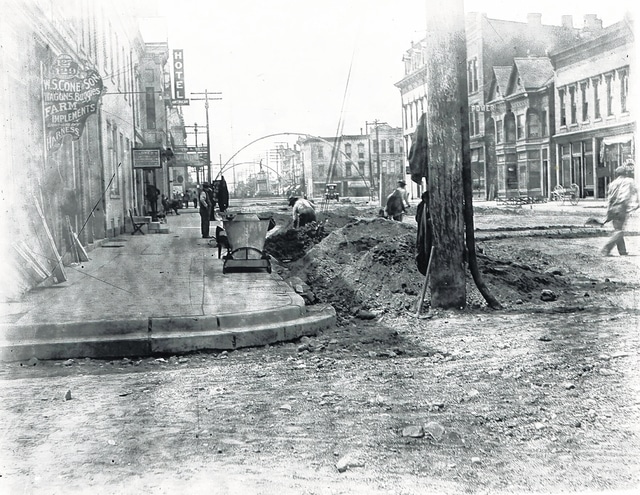
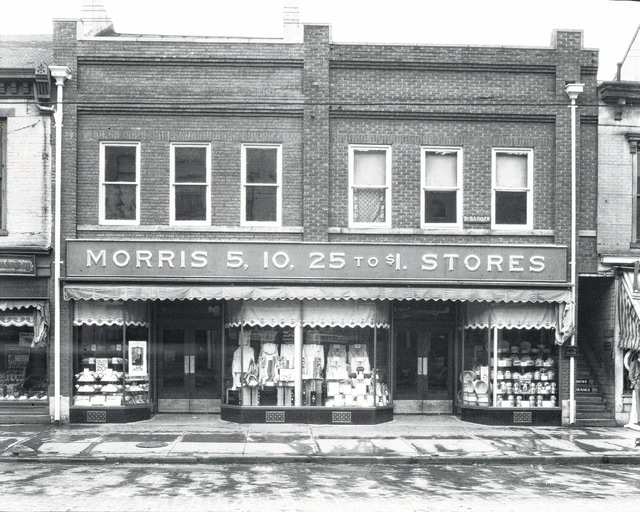
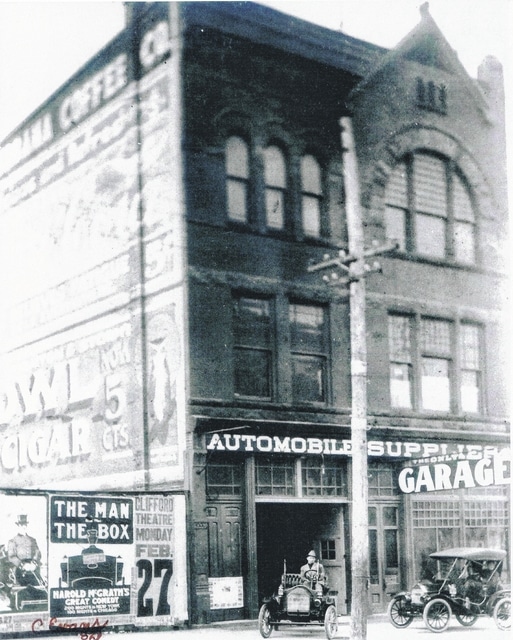
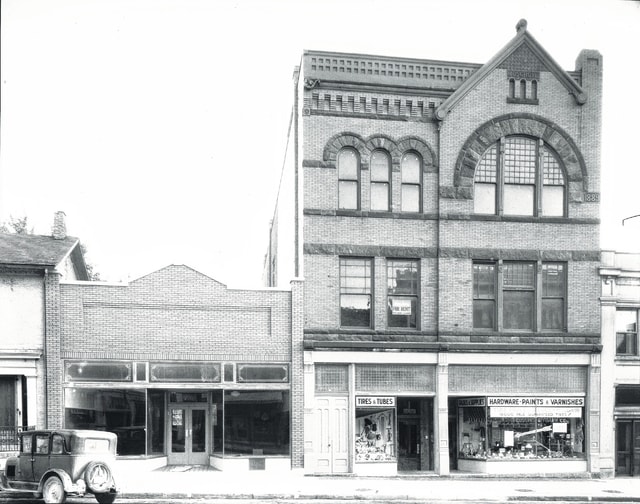
The Champaign County Preservation Alliance hopes visitors will have a day filled with discovery and fun as they view spaces seldom open to the public and enjoy amazing views of Urbana from the windows of the seven featured properties on the Urban Loft Tour from 10 a.m. to 3 p.m. Saturday. This marks the second year for the Tour. Darby Creek Real Living is once again the corporate sponsor for the event.
The Champaign County Preservation Alliance is committed to the preservation and viability of Champaign County’s historic structures. We seek to emphasize their continuing importance to the vitality of our community. We hope visitors will agree that the Urban Loft Tour truly captures the spirit of the first keeper of the National Register of Historic Places, William Murtagh, whose definition of historic preservation is: “at its best, preservation engages the past in a conversation with the present over a mutual concern for the future.”
The 2015 Urban Loft Tour will give visitors the opportunity to see unique spaces, dream about how they would design a downtown home and experience downtown Urbana in an entirely different way.
Commercial development in post-World War II Urbana has been largely single-story in design. However, for the 19th and early 20th centuries, multi-story structures were the norm. They were built with a variety of uses in mind. Retail spaces dominated the ground level with office, auditorium, lodge hall, and residential spaces on the upper levels. Downtown Urbana has been blessed with a varied streetscape that includes Federal, Romanesque, Renaissance Revival, Classical Revival, Art Deco and Modern styles. This variety in exterior design gives way to equally varied interior spaces.
This year’s Loft Tour has something of interest for everyone: a noted theater building finding new life, beautiful, finished, creatively decorated spaces, spaces in the middle of restoration, living spaces large and small, and one space just for the dreamers – our “diamond in the rough.”
Gloria Theater—216 S. Main St.
216 S. Main St. has been a major focus for entertainment in Urbana for more than a century. The Clifford Theater built by nationally famous vaudeville entertainer and Urbana native Billy S. Clifford opened its doors in 1905. As vaudeville declined and movies became the popular entertainment of choice, Urbana inventor and entrepreneur Warren G. Grimes rebuilt the Clifford as an art deco movie palace in 1941. The theater opened its doors as the Gloria on Christmas Day 1941. 2015 Loft Tour visitors will be able to see the progress made since last year’s tour. They will tour the second floor where they will still see vestiges of the old Clifford Theater as well as the projection room and the Grimes’ family private viewing room with its custom designed Gloria Theatre carpeting. When the Urbana Cinema closed, Dave Smith and a group of volunteers at the Urbana United Methodist Church were intrigued with the potential role the theater might play in the life of the community. They formed the GrandWorks Foundation. In 2014 CCPA made a $5,000 grant toward the renovation of the theater. In the past year, GrandWorks has continued its work on the building. Although much work lies ahead, the past year has seen a wide range of live programs and the Gloria is once again becoming an community gathering place.
The Endowment Building – 111 S. Main St.
The bones of the building at 111-113 S. Main St. date from the 1870s when the Odd Fellows Lodge constructed a tall three-story building with a spacious hall on the upper floor. The ground floor housed the Urbana Post Office on one side and a grocery on the other. All that changed in 1922 when the building was purchased by the Ohio Industrial Endowment Fund Company. They removed the interior floors and turned a three-story building into a five-story structure with an internal steel beam support system. The ground floor was retail space, for many years the Urbana branch of The Home Store chain and later the Western Auto Store. The upper floors had 42 suites, which were used as professional and government offices. City directories listed as many as four beauty shops in the building at one time. The top floor still had a ballroom for events into the 1920s. The ornate Victorian style gave way to a building with an Art Deco feel. The second floor still has the embossed ceilings, interior hall windows, and beautiful wood trim of the 1920s reconstruction. Now a residential building with a variety of living configurations, the residents enjoy a community room that spans the front of the second floor. Owner Pam Thorpe has opened her own apartment for the tour. The windows in the stairwell offer some of the best views of downtown Urbana.
16 1/2 Monument Square
Once you climb the flight of stairs from the southeast corner of the Square, you feel like you have just entered a spacious Victorian home rather than a “living above the shop” apartment. While the second and third floors above 16 and 17 Monument Square have been used as storage space for decades, they have the potential to be a grand home in the urban duplex tradition. However, this space is definitely waiting for someone with the guts to take on a fixer-upper. The apartment enjoys lovely views of the Square from the interconnected rooms that span the front of the building. The rear of the building is dark now but it, too, has large windows that would bring light into all areas of this space. The upper two floors were clearly designed to be a single living space connected with a lovely open stairway. Don’t miss the unique gas stoves in many of the rooms. The ground floor spaces at 16 and 17 Monument Square have hosted a wide variety of retail businesses. Local preservationist Charlotte Hupp, mother of current owner Leslie Hupp Broadstone, purchased the property in 2001 as the location of the Sweet Annie store. The building has a long tradition of combining retail, professional and residential uses. Among the retail outlets have been a grocery and the Hickinbotham Paint store, which later became Urbana Paint Co. Among the long string of shoe stores was one called the Well Heeled Shoe Store and operated by the Happersett family. In 1895, Shaul’s Cigar Store at No. 16 even had a cigar store Indian.
13-B Monument Square
The federal style building at 12-13 Monument Square has witnessed most of the city’s history. Like many structures it has been modified over the years. It now has a decorative Victorian cornice, an embellished central dormer on the Square façade and decorative tin window lintels. The five-bay front and Palladian style north-facing attic window speak to its early 19th century origins. The second floor center window overlooking the Square still has its original six-over-six pane configuration. The ground floor has had far more drastic changes in its windows. Pat and Patsy Thackery are currently overseeing the renovation of a spacious one-bedroom apartment on the second floor. The open plan living space retains an original mantle and has two windows overlooking the square. Over the years, the building has housed a variety of professional offices and businesses as well as residential units. In the early 1870s the building was home to W.C. Stevenson, Undertaker. The Stevenson family also moved their furniture business to the building. The Paradise Lunch, later Restaurant, flourished at this location from the early 1920s and was then memorialized in the name of the new Café Paradiso in 2007.
114 1/2 Scioto St.
Owners Amber and Cody Smith have taken on the challenge of living in their second floor apartment while converting the space from two separate, small apartments into a spacious home with bedrooms on one side and a huge open plan living space on the other. Their renovation features exposed brick walls and a modern kitchen with a huge central island in a space perfect for entertaining. Unlike most downtown residences the upper floor of 114-116 Scioto enjoys a deep porch, which stretches across the entire back of the structure. Sanborn maps of Urbana indicate that the building was constructed sometime between 1890 and 1895. It is visible in a 1914 photograph of the paving of Scioto St. As visitors enter the building, they should take time to appreciate the elaborate metal hoods, which enliven an otherwise subdued front façade. Unlike many downtown buildings, the entry doors and large display windows on the ground floor are original to the structure. Early street level occupants included Ross & Brand Insurance and the Urbana Woman’s Exchange. Later commercial tenants included Western Mutual Fire Insurance, Dowds Agricultural Service, The Gas Company and R. M. Johnson, who sold a variety of automotive products. The upper floors seem to have been largely residential with an occasional professional office.
113 1/2 N. Main St.
Mike and Jane Major are dedicated preservationists. Their family home is a historic church and they have chosen historic downtown structures for business premises and studios. In addition, they have turned excess space in downtown buildings into stunning loft-style apartments. 113-115 N. Main St. features two creative and completely unique apartments. One spans the entire front of the building and then goes deep into its interior on the north side. The other might be called a studio apartment, but that term would utterly fail to describe the amazing living space on the southeast corner of the building. Both apartments are spaces to view at a leisurely pace so as not to miss the many creative details that turn a loft into a warm and inviting home. This building, like many in the downtown, has been modified multiple times over its long history. Its current façade is from the early 20th century, but its interior walls and part of its roof are much earlier. Look at the building from the opposite side of Main Street and you will see a sloped roof from a federal style building on the north section. There have been many commercial occupants over the years including groceries and drug stores. However, long time Urbana residents fondly remember its days as the city’s “dime store.” In 1912, it was The Economy Store, by 1930, the Morris 5¢ to $1 Store and finally, the G. C. Murphy Company.
117-119 Miami St.
Now home to the Champaign County Arts Council and Mike Major’s Sculpture Studio, this building was erected in 1889 by Dr. James M. Mosgrove, noted Champaign County physician, banker and business man. It is a wonderful example of the then popular Romanesque style. Take time to admire its heavy stonework and massive arched windows. Notice the Mosgrove name in the top gable and the year 1889 to the west of the largest stone arch. The façade also retains its original decorative glass block and cast iron pilasters. It’s hard to imagine now, but the eastern ground floor windows were once the location of a drive-in garage door when the building was home to The Only Garage and a Buick showroom. Other tenants have included groceries, a furniture store, and general merchandise stores like Cussins and Fearn, who had sales areas on two floors. Other upstairs tenants included a coffee company, Callahan Printing and the Christian Messengers Mission under the direction of Rev. O.H. Hart. The Majors are currently renovating the rear of the second floor. Tour visitors will want to make the climb to the third floor to marvel at the large open room, which still contains the frame of a steam-driven elevator and take time to enjoy the view from the arched windows. The star of the third floor is Mark Mefford’s two-bedroom loft. Light pours in through the massive windows to highlight the many creative design elements. Who wouldn’t want to do dishes when there is a crystal chandelier over the sink?
Communities across the country are recognizing that strong, vibrant downtowns depend on a diverse mix of uses. Buildings play a key role in a healthy downtown. Historic buildings are critical in giving a community a sense of place and establishing character. Historic preservation and the adaptive reuse of buildings is an important factor in making downtown areas stronger, more vibrant and more dynamic. The CCPA Urban Loft Tour will showcase ways in which local citizens are working to keep downtown Urbana vital and meaningful in the 21st century.
The CCPA Urban Loft Tour is being held in conjunction with the Monument Square District’s Holiday Open House on Saturday, Nov. 7. The tour sites will be open from 10 a.m. to 3 p.m. Since the tour includes spaces that are primarily located on upper floors of historic downtown buildings, stair climbing ability is essential for those who wish to participate in the tour.
Buying tickets
Prior to the day of the tour, tickets may be purchased for $15 at the Champaign County Chamber of Commerce as well as the Urbana offices of Civista Bank, Peoples Savings Bank, Perpetual Savings Bank and Security National Bank and Bill’s Enchanted Florist. On the day of the tour, tickets may be purchased at the Gloria Theater, 216 S. Main St. The tour-day ticket price is $17.
The Champaign County Preservation Alliance is committed to ensuring the preservation and viability of Urbana’s historic buildings. Our annual Home and Garden Tour each June focuses on historic homes throughout the county. The Urban Loft Tour focuses on the creative use of downtown structures and will give participants the opportunity to see spaces seldom open to the public. The CCPA wishes to thank the building owners and tenants who have made this day possible. We also want to thank the Champaign County Public Library, whose online database of Champaign County newspapers has revolutionized what is possible in local history research, and the Champaign County Historical Society for providing fascinating images from its extensive photographic collections.
For more information call 800-791-6010 or visit the 2015 Urban Loft Tour pages at http://www.urbanahomeandgardentour.com/urban-loft-tour.html.










